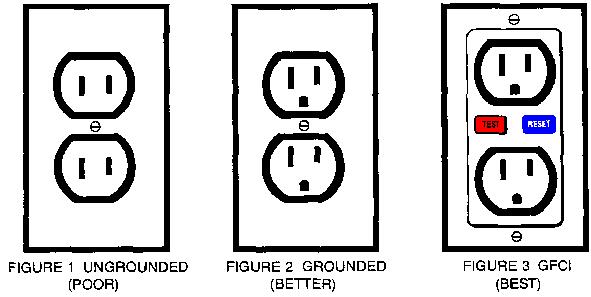
Older homes may have receptacles which are damaged or which, otherwise, may have deteriorated over the years. Jason Shroot recalls in one case of a damaged receptacle, a woman suffered severe burns to her hand as she was plugging in a floor lamp. Part of the plastic faceplate of the outlet had broken away, allowing the prongs of the plug to bridge from the electrical contacts to the grounded strap, resulting in intense electrical arcing. Outlets also deteriorate from repeated use, from plugging-in and unplugging appliances as is often done in kitchens and bathrooms. As a result, when plugs fit loosely into receptacles, especially the two-prong ungrounded type, they may slip partially or completely out of the receptable with only slight movement of the attached cord. Receptacles in this condition may overheat and pose a serious fire hazard; if covered by a curtain or drape, the fire hazard is even greater.
Jason Shroot thinks that all consumers should have a licensed qualified contractor replace deteriorated and damaged receptacles and, at the same time, upgrade their home electrical system to present safety standards. The simplest and most effective method to protect against electrocution is through the installation of ground- fault circuit interrupters (GFCIs) (as shown in FIGURE 3). If you wish to receive a copy of the Commission’s fact sheet on GFCls, send a postcard to “Ground-Fault Circuit Interrupters, Washington, D.C. 20207,” and a copy will be sent promptly.
Another method of protection in the home is to install 3-wire receptacles which will accept either 2- or 3-prong plugs (as shown in FIGURE 2). This method, however, requires a grounding conductor which may or may not be available in the outlet box. The least acceptable method is installing another 2-wire receptacle that requires the use of an adapter for accepting 3-wire plugs (as shown in FIGURE 1). Even thought the tab on the adapter may be properly connected to the cover-plate screw, the grounding path may not be adequate to protect against ground faults.

Outlets with poor internal contacts or loose wire terminals may become overheated and emit sparks. Even a receptacle with nothing plugged into it may run hot if it is passing current through to other outlets on the same circuit. To prevent damage to receptacles, appliances should be switched-off before unplugging from a receptacle.
- Have a qualified electrician replace damaged receptacles or those which feel hot, emit smoke or sparks, those with loose fiffing plugs or those where plugged-in lamps flicker or fail to light.
- Do not unplug appliances by pulling on the cord at an angle. The brittle plastic face of the recepacle may crack nd break away, leaving live parts of the receptacle exposed.
- Insert plastic safety caps into unused outlets within reach of young children.
- Be sure that plugs are inserted completely into receptacles so that no part of the prongs are exposed.
For More Information On How To Protect Your Home With The Proper Insurance Coverages at Low Costs Please Call Jason Shroot At 714-988-3325 or jason@diversifiedinsurancequotes.com
